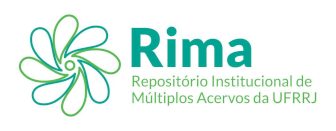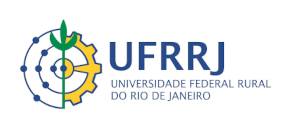Please use this identifier to cite or link to this item:
https://rima.ufrrj.br/jspui/handle/20.500.14407/20033| Tipo do documento: | Tese |
| Title: | Indicadores de qualidade do solo em áreas de agricultura de montanha no bioma Mata Atlântica, sudeste do Brasil. |
| Other Titles: | Soil quality indicators in mountain agriculture areas in the Atlantic Forest biome, southeastern Brazil |
| Authors: | Zandoná, Silver Rodrigues |
| Orientador(a): | Pereira, Marcos Gervasio |
| Primeiro membro da banca: | Pereira, Marcos Gervasio |
| Segundo membro da banca: | Silva Neto, Eduardo Carvalho da |
| Terceiro membro da banca: | Lima, Erica Souto Abreu |
| Quarto membro da banca: | Campos, David Vilas Boas de |
| Quinto membro da banca: | Assis, Renato Linhares de |
| Keywords: | Manejo do solo;Sistemas conservacionistas;Indicadores edáficos;Sustentabilidade ambiental;Soil management;Conservation systems;Soil indicators;Environmental sustainability |
| Área(s) do CNPq: | Agronomia Agronomia |
| Idioma: | por |
| Issue Date: | 26-Jul-2024 |
| Publisher: | Universidade Federal Rural do Rio de Janeiro |
| Sigla da instituição: | UFRRJ |
| Departamento: | Instituto de Agronomia |
| Programa: | Programa de Pós-Graduação em Agronomia - Ciência do Solo |
| Citation: | ZANDONÁ, Silver Rodrigues. Indicadores de qualidade do solo em áreas de agricultura de montanha no bioma Mata Atlântica, sudeste do Brasil. 2024. 117 f. Tese (Doutorado em Agronomia, Ciência do Solo) - Instituto de Agronomia, Universidade Federal Rural do Rio de Janeiro, Seropédica, RJ, 2024. |
| Abstract: | As áreas de montanha são de grande relevância já que são significativas na produção de alimentos e na realização de serviços ecossistêmicos. Dessa forma compreender as alterações que ocorrem nesses ambientes durante o manejo podem prevenir impactos decorrentes do uso inadequado. O presente estudo foi dividido em três capítulos com diferentes objetivos. No capítulo I: i) realizou-se a caraterização morfológica, química e física dos atributos do solo de perfis coletados em áreas com diferentes cultivos agrícolas e coberturas vegetais; ii) verificou-se as principais classes de solos dessas áreas; e iii) avaliou-se a capacidade de uso agrícola, bem como as classes de aptidão e principais limitações. No capítulo II foi i) quantificado o armazenamento de carbono (C) e nitrogênio (N) nessas áreas, e ii) avaliado a origem desses elementos. O capítulo III teve como intuito i) verificar a possível influência do monocultivo de diferentes espécies vegetais em ambiente de montanha no acúmulo e composição da serrapilheira; ii) avaliar possíveis modificações impostas por essas coberturas e formas de cultivo nos atributos químicos associados a fertilidade do solo; e iii) analisar a compartimentalização da matéria orgânica do solo (MOS), identificando quais os tipos de cobertura estão contribuindo para aumento dos teores de carbono orgânico e suas respectivas frações orgânicas. Foram avaliadas três áreas cultivadas com banana (BN), café (CF) e cacau (CC) e uma área de referência (FS, fragmento florestal da Mata Atlântica) em três pontos distintos com relevo declivoso, típico da região sudeste do Brasil. No capítulo I verificou-se grande parte dos perfis identificados no primeiro nível categórico (ordem) como Cambissolos, em função da presença de um horizonte diagnóstico subsuperficial B incipiente, e no segundo nível categórico (subordem) como Háplicos. Quanto à aptidão agrícola, as maiores limitações de utilização foram a baixa fertilidade natural, a suscetibilidade a erosão e os impedimentos à mecanização ou cultivo, decorrentes da declividade, pedregosidade e rochosidade. No capítulo II constatou-se que a magnitude dos efeitos causados pelos cultivos agrícolas e coberturas vegetais nos atributos do solo aumentou no sentido FS – BN e CC – CF. Os cultivos de BN e CC incrementaram os teores e estoques de C (em superfície) e N (em profundidade) no solo quando comparados às áreas com cobertura de FS, enquanto o cultivo de CF promoveu reduções dos valores desses atributos. Através das análises isotópicas de δ13C e δ15N ficaram evidentes diferenças entre os cultivos agrícolas, com destaque para a área de cultivo de CC que separou-se dos cultivos de BN e CF. No capítulo III verificou-se que os maiores estoques de serrapilheira foram quantificados nas áreas de BN e FS (~ 34,0 e 22,0 Mg ha-1). Entre as frações da MOS, a matéria orgânica leve em água foi a mais sensível ao efeito dos cultivos agrícolas e coberturas vegetais, principalmente quanto aos valores das razões estequiométricas. Verificou-se similaridade para os teores de C total, N total, C orgânico total e fósforo (P) total entre as áreas de FS, BN e CC. Observou-se padrões diferenciados para as razões estequiométricas entre os compartimentos. As respostas dos teores de C, N, P e a sua estequiometria aos diferentes cultivos agrícolas e coberturas vegetais têm aplicações significativas no desenvolvimento de estratégias de manejo sustentável. |
| Abstract: | Mountain areas, despite being relegated to a secondary level when it comes to agriculture, are of great relevance as they are significant in food production and the provision of ecosystem services. In this way, understanding the changes that occur in these environments during management can prevent impacts resulting from inappropriate use. The present study was divided into three chapters with different objectives. In chapter I i) the morphological, chemical and physical characterization of soil attributes from profiles collected in areas with different agricultural crops and vegetation cover was carried out; ii) the main soil classes of these areas were verified; and iii) the capacity for agricultural use was evaluated, as well as the suitability classes and main limitations. In chapter II, i) the storage of carbon (C) and nitrogen (N) in these areas was quantified, and ii) the origin of these elements was evaluated. Chapter III aimed to i) verify the possible influence of monoculture of different plant species in a mountain environment on the accumulation and composition of litter; ii) evaluate possible changes imposed by these covers and forms of cultivation in the chemical attributes associated with soil fertility; and iii) analyze the compartmentalization of soil organic matter (SOM), identifying which types of coverage are contributing to an increase in organic carbon levels and their respective organic fractions. Three areas cultivated with banana (BN), coffee (CF) and cocoa (CC) and a reference area (FS, forest fragment of the Atlantic Forest) were evaluated at three different points with steep terrain, typical of the southeastern region of Brazil. In Chapter I, a large part of the profiles identified at the first categorical level (order) as Cambisols, due to the presence of an incipient subsurface diagnostic horizon B, and at the second categorical level (suborder) as Haplicos, were verified. Regarding agricultural suitability, the greatest limitations of use were low natural fertility, susceptibility to erosion and impediments to mechanization or cultivation, resulting from the slope, stonyness and rockiness. In chapter II it was found that the magnitude of the effects caused by agricultural crops and vegetation cover on soil attributes increased in the FS – BN and CC – CF direction. BN and CC crops increased the contents and stocks of C (on the surface) and N (in depth) in the soil when compared to areas with FS coverage, while the CF crop promoted reductions in the values of these attributes. Through isotopic analyzes of δ13C and δ15N, differences between agricultural crops were evident, with emphasis on the CC cultivation area that was separated from BN and CF crops. In chapter III it was found that the largest litter stocks were quantified in the BN and FS areas (~34.0 and 22.0 Mg ha-1). Among the SOM fractions, light organic matter in water was the most sensitive to the effect of agricultural crops and vegetable covers, especially in terms of stoichiometric ratio values. Similarity was verified for the contents of total C, total N, total organic C and total phosphorus (P) between the areas of FS, BN and CC. Differentiated patterns were observed for the stoichiometric ratios between the compartments. The responses of C, N, P content and their stoichiometry to different agricultural crops and vegetation cover have significant applications in the development of sustainable management strategies. |
| URI: | https://rima.ufrrj.br/jspui/handle/20.500.14407/20033 |
| Appears in Collections: | Doutorado em Agronomia - Ciência do Solo |
Se for cadastrado no RIMA, poderá receber informações por email.
Se ainda não tem uma conta, cadastre-se aqui!
Files in This Item:
| File | Description | Size | Format | |
|---|---|---|---|---|
| 2024 - Silver Rodrigues Zandoná.pdf | 1.6 MB | Adobe PDF |  View/Open |
Items in DSpace are protected by copyright, with all rights reserved, unless otherwise indicated.

